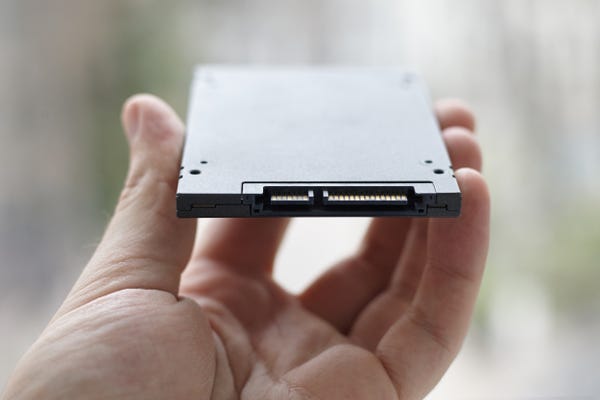What Is SSD? Everything You Need to Know About Solid-State Storage
If you’re asking, “what is SSD?” But you don’t know much about it, then you’ve found the right website. SSD is a solid-state drive (SSD) is an electronic storage device that permits writing, reading and storing data for a long time without the need for a continuous power source.
Do you realize that the lengthy path of SSD storage and the development of SSD started during the 50s?
Yes that’s right!
In the past, they utilized them in the first generation of computer (vacuum tube computer) using two technologies that are similar that were similar: read-only memory capacity on cards as well as the magnetic core memory.
However, these two options became obsolete between the years 1950 and 1960, due to the rising popularity of less expensive storage devices such as drum memory.
Since technology is constantly changing in the 1980s and 1970s, SSDs were back on the market, but they were quite expensive and not widely accepted up until Dataram released their Bulk Core SSD back in the year 1976. While this 2GB SSD groundbreaking invention used the core memory however, it was highly compatible and ran much faster than fixed-head disks. Check out 1tb ssd price in india online at Genuine and Authorised website
Companies began to develop SSD technologies, like for instance, the Sharp PC-5000 with a 128 KB SSD bubble memory in 1983. In the early 1990s flash-based SSDs were developed and began growing in popularity across the world, however, they were expensive (up up to $47,700).
in 2003 Transcend launched flash SSDs equipped with the Parallel Advanced Technology Attachment (Parallel ATA or PATA) connector for just $50. PATA connectors connect hard drives into computers.
It wasn’t until 2006 when flash SSDs were made available for sale by Samsung with 32 GB capacities and with a PATA interface. The storage capacity of SSDs were launched during 2009 when OCZ Technology came with a 1TB flash-based SSD and Virident Systems developed second-generation flash-based SSDs that could hold up to 2.2 trillion TB of storage capacity in 2012.
In the last quarter in 2012 we had solid enterprise flash drives that can be used for high-performance applicationslike Intel’s SDD DC S3700 drive. The growing demand for speed, performance, and reliability are key factors in the development and growth in the use of SSDs as compared to HDDs.
What is what makes an SSD distinct than an HDD? Which is superior? How do you choose the most suitable SSD for your requirements? Click here to learn more
Difference Between SSD and HDD
To comprehend the hype around SSD It is essential to understand how it functions and what makes it different from other storage technologies such as an HDD. While SSDs and HDDs can both be used as storage devices, they work differently.
How SSD Works
In contrast to HDDs which are a type of HDD, unlike HDDs, an 500gb ssd price device isn’t equipped with moving parts or fast access times. With SSD the data is stored in microchips which makes it more efficient. SSD is much smaller relative to HDD and is able to be connected directly onto the motherboard. You could say it’s the most advanced and advanced model of an USB memory stick.
SSD drive
SSD is based on flash memory which includes NOR and NAND both being among the top two well-known flash kinds. The majority of SSDs make use of NAND flash memory since it’s quicker to write and smaller in size than the NOR. NAND is a non-volatile memory that stores data in it even when the disk is not in use.
While HDDs use mechanical arms for reading and writing data however, SSDs do not. SSD makes use of an internal processor (controller) to write and read data. It is also responsible for keeping, restoring the data, caching it, and cleaning data.
The SSD speed at which it can read as well as writing information, along and its performance overall is determined by the controller.
How HDD Works
HDDs have been around for longer than SSDs. They are found in a variety of electronic devices, like laptops, desktops gaming consoles, phones for mobiles and even tablets. It’s currently thought of as an outdated technology for keeping data because of its operation method.
An HDD drive
If you’re familiar to old record players, then an HDD is somewhat similar. A HDD is an electro-mechanical volatile storage device made up of several platters (disks) that rotate around the spinning axis (central the axis). It is equipped with an arm with a mechanical mechanism that allows it to read and write data.
There are two widely used HDD dimensions: 2.5-inch HDD used in laptops, and 3.5-inch HDD found in desktops. Its speed on an HDD is determined by the number of rotations or spins it performs per minute.





